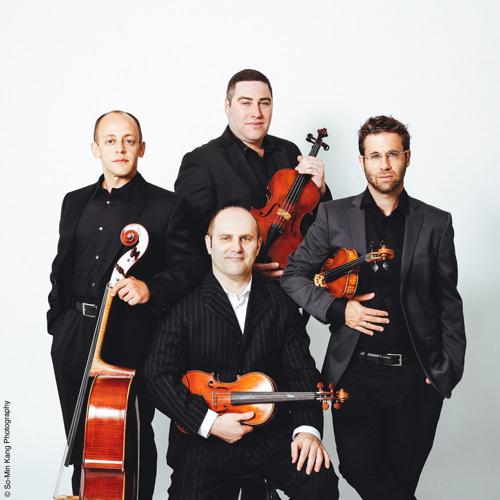Tucson officially became a footnote in the storied career of the Florida-based Amernet String Quartet.
On Sunday afternoon, before a full house at the University of Arizona-area Grace St. Paul’s Episcopal Church, the quartet performed Bach’s “The Art of the Fugue” in its entirety for the first time for an audience.
If somewhere down the line the ensemble decides to record it, they will likely recount in the liner notes how the St. Andrew’s Bach Society in Tucson volunteered to be their guinea pig.
Not that they had to twist many arms among the several hundred packed into Grace St. Paul’s Sunday for the finale of the Bach Society’s 31st season.
Aside from the soft whirring of the church’s air conditioning and a couple untimed bursts of applause, the hall was church-mouse quiet throughout the performance as the audience focused their attention on the stage. And at the end, as the ensemble let the unwritten notes of the final fugue hang in dramatic fashion — picture the mannequin challenge with all four musicians sitting still as statues, bows raised mid-stroke — the audience burst into roaring applause and a couple baritone-voiced men among them shouted “Bravo!” “Bravo!”
“The Art of the Fugue” clocks in over 90 minutes and as Amernet cellist Jason Calloway explained to the audience before the concert Bach left no instructions. No one really knows for certain, he said, what the 18th century composer intended for the work, which didn’t even specify the instruments. Bach died before he finished the final fugue.
The piece is based on a single subject that introduces nearly every fugue and appears in the four cannons and the choral. The idea is that each musician will follow the leader — in the opening fugue, it was violinist Avi Nagin introducing the subject in a mournful melody — adding a different layer to the subject. After Nagin’s somber opening, violinist Misha Vitenson added a slightly brighter tone before Calloway and violinist Michael Klotz added their muscular baritones to the mix.
The leadoff instrument changed several times, which created an interesting contrast of pitches and, in turn, moods. When the viola or cello led, the tone was more sober; when Vitenson started them off, the tone was higher and lent bright colors that tempered the deeper voices.
But no matter the tone or mood, that melody was the same. In some ways it’s almost as if Bach was trying to test our mettle, as if we might tire of hearing the passage repeated so often. But the Amernet Quartet added such nuance and emotion to the performance that each movement sounded new and exciting, as if you were hearing it for the first time.
Sunday was the first time in 17 years that anyone has performed Bach’s “The Art of the Fugue” in its entirety in Tucson. The last time was when the Juilliard String Quartet performed the work with UA Presents in early 2002.
“This is not something you may not have (experienced) in your lifetime,” Bach Society Director Ben Nisbet told Sunday’s audience.





